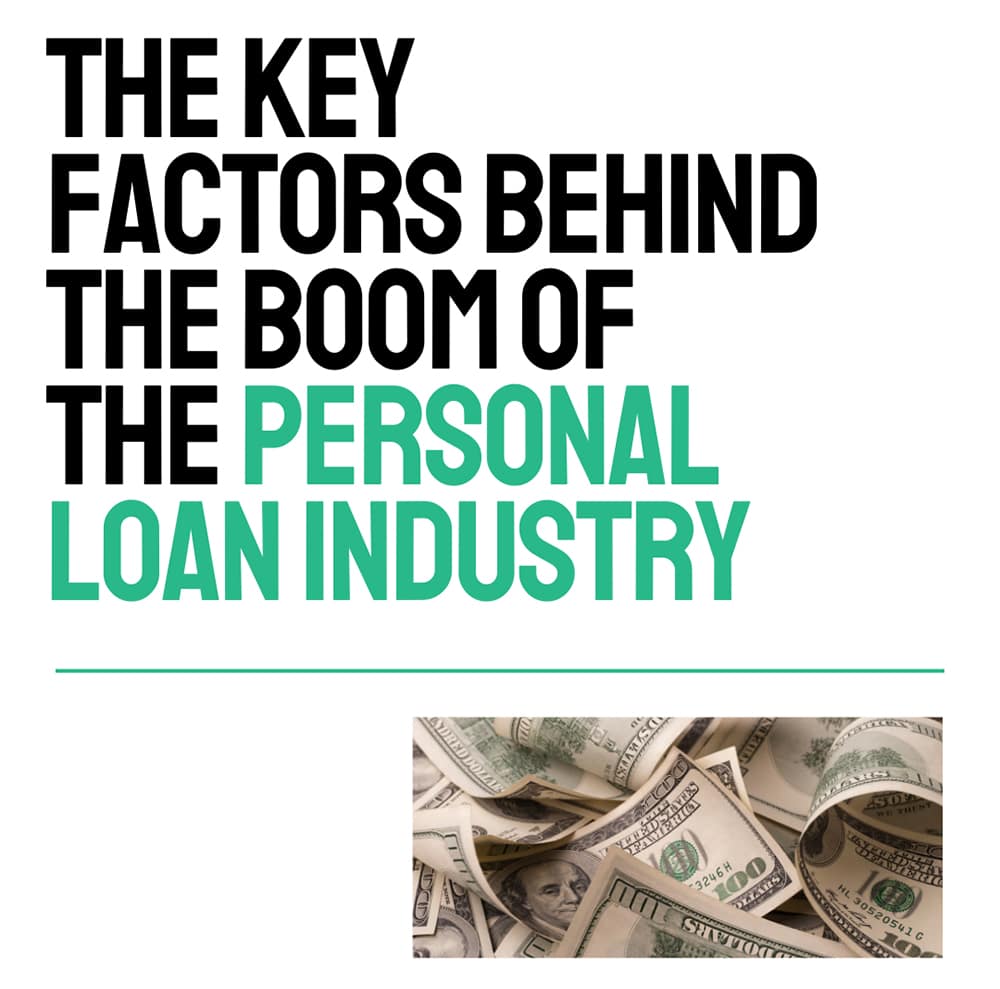A personal loan might not be the most popular lending product to come to mind. Yet, the industry is changing rapidly, outpacing mortgage rates and auto loan growth.
So far, in 2023, the personal loan percentage growth rate has increased by 11.48%, according to data.
Compared to mortgage and home equity line growth, which remains steady, it seems the personal loan industry is realizing its boom.
Additionally, according to this report, personal loans and other consumer loan balances increased by $15 billion between the first and second quarters of 2023.
But is the personal loan industry boom a one-time trend or here to last? Let’s discuss the key factors driving this massive change.
The Role of Inflation
There are two ways to track and examine inflation. You’re either:
- Tracking price changes within the overall US economy or
- Tracking individual (or sets of) goods or services.
For instance, the economy went through high inflation beginning in April 2021 and ending in April 2023.
Let’s give an example of how this impacts the average consumer. Of course, we’re discussing the highly discussed topic of “eggflation”.
In April 2021, you could buy a dozen eggs for $1.62 on average. However, by January 2023, that same product sold for $4.82, nearly three times more.
Although inflation has fallen steadily since June 2022, Americans were still finding a way to pay for those eggs (and all their other financial obligations.)
It’s likely no coincidence that from 2021 onward, credit card debt ticked up 28.9% to just over one trillion dollars.
As balances grew, more borrowers needed ways to cut or eliminate their high-interest credit card balances.
The need to refinance resulted in more individuals finding alternatives. Personal loans provided an attractive option to pay credit card debt and cover other financial obligations.
Yet inflation is only one part of the picture. To uncover reasons for change in the personal loan industry, we must also discuss additional factors that impact consumer choice.
Key Takeaway: Inflationary pressures may have contributed to the growth of the personal loan industry as consumers seek alternatives to high-interest credit card debt.

The Impact of Online Lenders
While in 2013, only 5% of unsecured personal loan balances were owed to FinTech companies, by 2018, that rate was 38%.
Moreover, only four years later, by 2022, FinTech accounts surpassed 50% of all personal loan balances.
Despite differences in borrowing laws throughout states, most borrowers use unsecured personal loans for one thing: to consolidate debt.
Gone are the days when securing a personal loan required gathering paperwork, entering a bank, and speaking to a banker.
Instead, you can enjoy a streamlined online application process that’s much more accessible and equally convenient.
Consumers apply in minutes and receive quick, if not instant, access to funds.
Additionally, unlike other traditional lending products, which banks approve at lower rates now than in previous years, personal loans are an option for most.
Above-prime, near-prime, and subprime borrowers increasingly turn to FinTech loans for many reasons.
Key Takeaway: The rise of FinTech companies providing quick and easy access to personal loans has greatly contributed to the industry’s rapid growth.
The Absence of Collateral
No house, no car? Most likely, no problem. One of the most significant benefits of personal loans is that they are typically unsecured.
So, whether you’re a college student or simply without significant assets, getting a personal loan is typically within reach.
Because borrowers don’t need collateral, personal loans are very accessible, which is a massive draw for online lenders.
Key Takeaway: The absence of collateral requirements makes personal loans an attractive option for a wide range of borrowers, further contributing to the industry’s growth.

Skyrocketing Credit Card Interest Rates
The average credit card purchase APR is somewhere around 20%. Compare that to the average personal loan interest rate of 11.31%, and the switch is an obvious choice.
You don’t have to be a math whiz to realize that credit card payments are expensive.
If you’re grappling with debt, why get shackled with sky-high credit card interest rates when personal loans offer a more affordable alternative?
Of course, these rates all depend on your creditworthiness, but generally, credit cards are the more expensive option.
Other factors contributing to the boom
The buzz continues with interest rates and no-strings-attached borrowing. Some people like using the computer to locate and secure financial products that improve their situations.
Managing and applying for financial products online comes naturally to most people. With the widespread use of the internet, a personal loan is only a few clicks away.
And thanks to the pandemic, even the most tech-averse folks are familiar with digital financial solutions.
Overall, high-tech solutions that solve lending needs quickly make.
FinTech loans are a power player in a rapidly growing financial industry.
Thus, it’s no surprise that more consumers are borrowing from them than ever.
Key Takeaway: The ability to secure lower interest rates and the convenience of online borrowing have led more consumers to choose personal loans over credit cards. Additionally, the increased availability and ease of accessing these loans through technology have contributed to their popularity.

Conclusion
So, what’s the deal with personal loans? This industry is booming for several straightforward reasons.
The allure of low interest rates, the absence of collateral, and the rise of online lending platforms are just a few.
In a world where inflation spikes and credit card debt looms, personal loans have emerged as the more affordable option.
Watch this space to continue understanding how this industry is making ripples within the world of finance.




